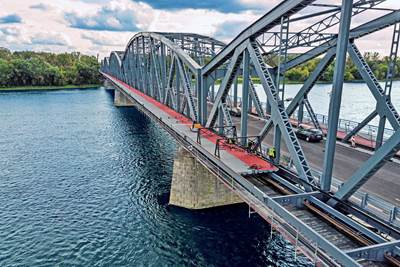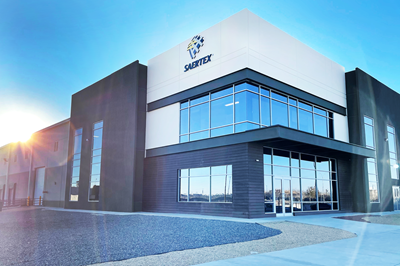Saertex expands production range with pultruded planks for rotor blades
SAERplanks pultruded profiles, opening new avenues in the wind industry, comprise heavy-tow carbon fibers produced using a novel hybrid resin system for reliable performance, high productivity and minimum scrap rates.
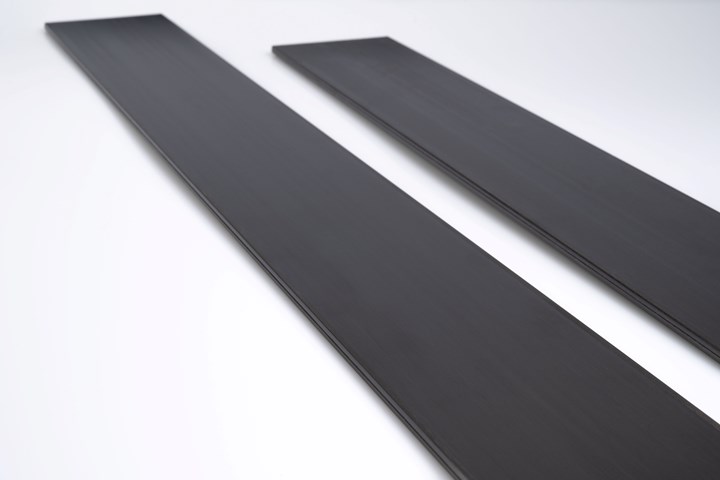
Photo Credit, all images: Saertex
To enhance its range of fiber-based materials for composites in the wind industry, Saertex (Saerbeck, Germany) will introduce a new product line at JEC World 2022 in Paris, France, occuring this May. The new pultruded profiles product line, SAERplanks, will complement the company's offering of non-crimp glass and carbon fiber fabrics for the spar cap section within rotor blades. At the show, the company will add an offer of carbon fiber pultruded planks to its existing product range of reinforcement materials.
“The market launch of our pultruded profiles SAERplanks will open up completely new opportunities for us to reinforce the innovation activities of our customers in the wind industry,” says Christoph Geyer, CEO at Saertex. “This enables us to deliver the most efficient materials — across technologies — adapted to the requirements of our customers.”
The company has been actively working in recent years to develop an innovative, in-house manufacturing capability for making pultruded profiles with elevated strength and stiffness. The first production line is expected to begin operations soon at Saertex headquarters based in Saerbeck, Germany.
SAERplanks are based on heavy-tow carbon fibers produced in a novel pultrusion process that Saertex says is no longer based on a traditional resin bath. “There are two outstanding things about SAERplanks. On the one hand, we combine the carbon fiber with a new hybrid resin system, developed in collaboration with AOC Resins [Schaffhausen, Switzerland]. And on the other hand, we established an innovative manufacturing process for higher productivity based on a closed resin injection system,” says Hans Plug, manager pultrusion at Saertex. “For our customers, this new technology offers a more sustainable production method, in combination with a more consistent quality compared to products currently available on the market.”
The novel pultrusion process that Saertex uses to produce its SAERplanks product line is no longer based on a traditional resin bath.
The high-performance hybrid resin AOC developed specifically for Saertex served to achieve requirements for reliable performance, high productivity and minimum scrap rates. Through multiple product development iterations and thorough experimental design, experts from Saertex and AOC report that they have been able to optimize resin composition and key process settings. As a result, Saertex is now able to run its process consistently, with optimized quality and performance reliability.
“AOC really likes to work with customers in a close collaboration mode to develop unique resin solutions for their processes and specific application requirements, supplying products around the world,” notes Fons Harbers, marketing and sales vice president for AOC EMEA.
Moreover, Saertex notes that its development of unidirectional (UD) and multiaxial fabrics for the wind power industry will be continued and intensified, in addition to the new range of pultruded products. For example, the company recently introduced Easy Drape UDs, a product innovation in the fiberglass sector, and will also introduce a new carbon fiber UD material for spar cap applications at JEC World 2022.
“One-stop shopping is an important component of our offering for a resource-saving future. It allows us to support our customers to reduce complexity and optimize efficiency,” underlines Geyer. “Our global footprint with locations on five continents plays an important role in this — especially when it comes to supply chain reliability and sustainability aspects. We are therefore planning to invest in additional production capacities worldwide for SAERplanks. This will be proceeded in line with our customer’s needs.”
Related Content
Sulapac introduces Sulapac Flow 1.7 to replace PLA, ABS and PP in FDM, FGF
Available as filament and granules for extrusion, new wood composite matches properties yet is compostable, eliminates microplastics and reduces carbon footprint.
Read MoreMaterials & Processes: Fibers for composites
The structural properties of composite materials are derived primarily from the fiber reinforcement. Fiber types, their manufacture, their uses and the end-market applications in which they find most use are described.
Read MoreThe making of carbon fiber
A look at the process by which precursor becomes carbon fiber through a careful (and mostly proprietary) manipulation of temperature and tension.
Read MoreMaterials & Processes: Composites fibers and resins
Compared to legacy materials like steel, aluminum, iron and titanium, composites are still coming of age, and only just now are being better understood by design and manufacturing engineers. However, composites’ physical properties — combined with unbeatable light weight — make them undeniably attractive.
Read MoreRead Next
Fibrolux supports Polish bridge with custom pultruded deck beams
More than 16 kilometers of fiberglass-pultruded profiles double Marshal Jozef Pilsudski Bridge capacity and upgrade its durability.
Read MoreSaertex opens production facility in Mexico for textile reinforcements
Saertex Mexico S.A. de C.V plant will begin production of multiaxial glass fiber noncrimp fabrics immediately, with goals to add production lines for expansion into wind power sector.
Read MoreFrom the CW Archives: The tale of the thermoplastic cryotank
In 2006, guest columnist Bob Hartunian related the story of his efforts two decades prior, while at McDonnell Douglas, to develop a thermoplastic composite crytank for hydrogen storage. He learned a lot of lessons.
Read More


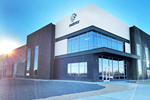




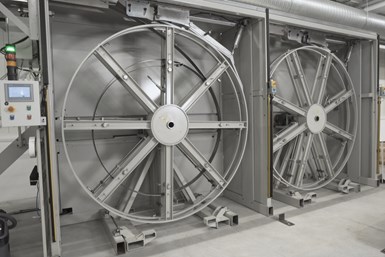







.jpg;maxWidth=300;quality=90)








